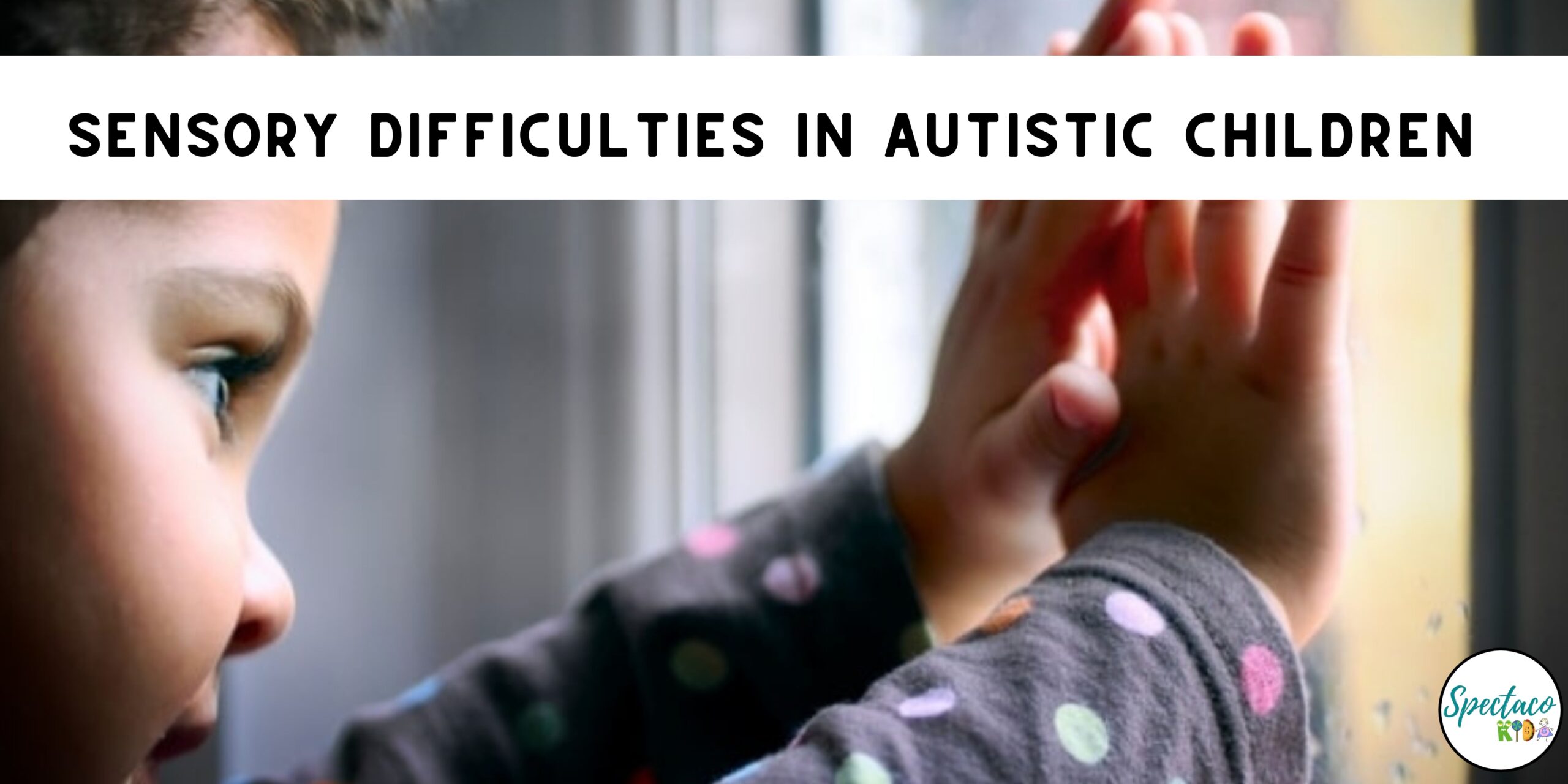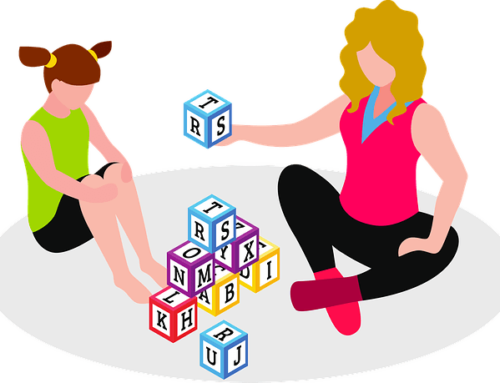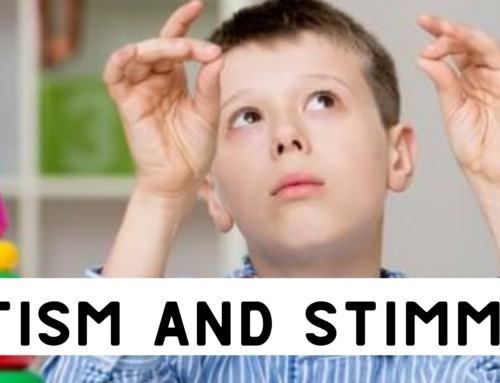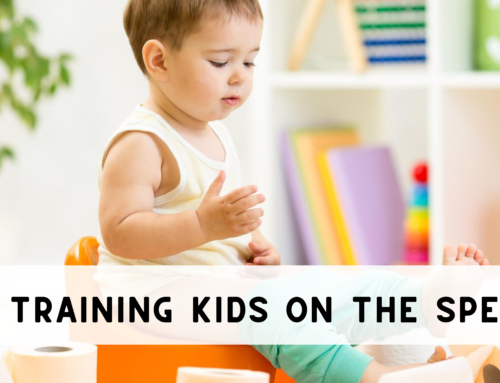What are sensory difficulties?
Sensory difficulties arise in individuals with certain conditions, for example in autistic people. This means that these individuals perceive and react to things in an unconventional manner, since their brain processes sensory information (related to the 7 senses including body awareness and movement) differently. An example of such a sensory issue is hypersensitivity.
How can you spot your child has this issue?
Sensory issues can be spotted as early as toddler years, especially when a child depicts unusual reactions to sounds, feels very irritated by small things, light, gestures etc. Additionally, if they are very clumsy and have trouble with motor skills like holding a crayon or zipping up, then you can be certain there is an underlying problem there. Some children may even exhibit intense behaviors like:
- Throwing tantrums during bathing or dressing
- Yelling when touched by water
- Having Very High or low pain tolerance
- Bumping into people and visible objects
- Putting stones and other inedible items in their mouth
How do sensory difficulties affect autistic children?
While regular children can process sensory information regularly and make decisions based on their sensory response, for individuals on the spectrum, inability to process this information, may cause them to feel frustrated or scared, thus, resulting in harsh or confusing behavior. In addition to the problems incurred whilst using their 5 main senses, autistic children also struggle with their sense of movement and a balance.
Does this mean autistic children are more sensitive?
Not only can children be oversensitive, but they can also be under sensitive to certain sensations.
Oversensitivity:
This implies that children may have a greater reaction to things other may probably react little to or probably not at all. It also means that autistic children who are oversensitive will need a little amount of sensation to trigger them. Hence, it is possible to over stimulate the child with a certain sensation, causing them to shy away from it. For example, a child who is oversensitive to sounds might block their ears at the sound of loud music, or a child who is oversensitive to taste, might be very selective about the food they like.
Under sensitivity:
Meanwhile, children on the spectrum may also be under sensitive to certain sensations. This means they will need a little amount of sensation to trigger them. Hence, to feel more satisfied, children will want more of this feeling. An example is that of a child who is under sensitive and turns up the sound in the car, or a child who is under sensitive to movement, is constantly jumping around and moving about.
How can parents help with their child’s sensitivity difficulties?
Parents play a crucial role in their child’s development. To be able to help autistic children better, parents can:
- Observe their child closely to see what they like and don’t like
- Monitor their reactions to see what bothers them and ultimately keep them away from it
- Help their child learn to deal with stressful or new situations
- Think and research of ways to help their child around a problem
- Seek advice from a medical health professional
- Adapt creative strategies, like games and toys to assist them with their sensory impairments
What are some useful games to assist children’s’ sensory needs?
Such games are called “People Games” and mostly involve a few individuals who interact and communicate together to be able to enact the game. There are no objects involved, just people. Some people games may involve running, hiding, and are mostly action-based in nature. Additionally, they contain words and phrases that need to be repeated alongside the actions, that can motivate children to speak, actively participate and enjoy themselves. Examples of such games are mentioned below:
- Peak-A-Boo
- Singing
- Ring Around the Rosie
- Tag
- Hide and Seek
- Tickling Games
- Piggyback Rides
- Finger Games like “Chopsticks” or “Rock Paper Scissors”
Peak-A-Boo
If played with a soft blanket, it can help your child adjust to the feel of certain materials and textures.
Singing
Rhymes with action words when enacted can help trigger movement of certain body parts and muscles that need help.
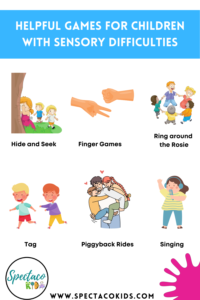
Ring Around the Rosie
Can help your child to spin and learn to maintain balance whilst spinning
Tag/Hide and Seek
Running games such as this help children move around swiftly, improving their control over their sense of direction.

Tickling Games
Help your child to feel different pressures in different body parts, thus, identifying what areas are very sensitive to touch
Piggyback Rides
Help your child maintain balance at a height

Finger Games
Help the child to focus on using their fingers and stimulate their mind

What are some useful toys for children with sensory preferences?
In addition to people games, sensory toys designed specifically to aid autistic children with sensory impairments can also come quite handy. Some of them are listed below:
Crystal Bead Balls
These are squishy and stretchable balls with beads enclosed inside and are great for visual and tactile stimulation.
Gel Shapes
Their wobbly texture heightens the sense of touch.
Riverstones
These help engage your child’s sense of touch and help them to learn how to balance, as they avoid touching the floor as they jump from one stone to the next.
Chewy Tubes
Chewy tubes are useful for children with oral sensitivities and encourage biting skills, or even those looking for oral stimulation can chew on these instead of inedible objects.
Trampoline
Trampolines are a good way to help children who enjoy jumping and improve body coordination.
Pattern Blocks and Boards
These games improve motor skills as children match objects and patterns to their designated boards.
On the contrary, these strategies can aid your child’s ability to use their 7 senses more effectively as they learn to focus better and utilize their motor skills more and more.
For more information, follow us on Instagram or visit our website!
